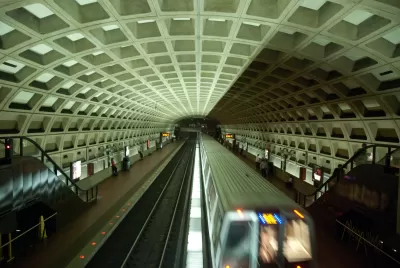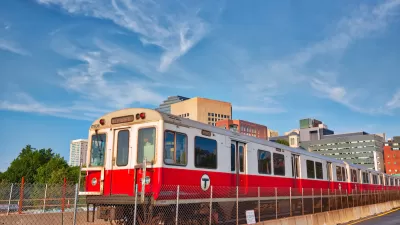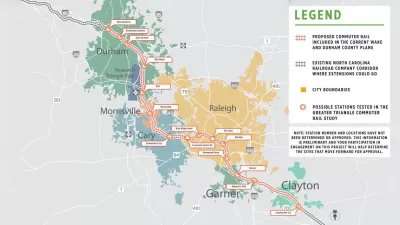The nation's second-largest transit system—and one of its newest—persists in the face of a host of challenges exacerbated by the pandemic.

Jake Blumgart interviews Zachary Schrag, author of The Great Society Subway, about the history of the ambitious Washington Metro system, which Blumgart calls "arguably the only comprehensive rapid transit system built in America after the rise of mass car ownership."
According to Schrag, officials at the time of its construction in the 1970s hoped it would provide a model for other cities. From its inception, the system had to compete with driving by providing ample amenities and attempting to serve both regional commuters and urban residents. Schrag notes that Metro committed to a more transit-oriented approach than other cities, making transit more convenient and raising the cost of driving and parking. Cities that build highways and parking alongside transit reduce the incentive to take public transportation and make the built environment less friendly to walking and biking.
Today, the system may struggle to accommodate new travel patterns. "What heavy rail is really, really good at is getting a lot of people to the same place at the same time," says Schrag. The challenge of providing service at off hours may only grow as work and mobility behaviors change.
Ultimately, says Schrag, massive infrastructure projects like Metro—or the Brooklyn Bridge, or the Erie Canal—require major investments in the future that Americans seem less willing to make.
FULL STORY: Lessons from Washington Metro, America’s Last Great Subway System

Alabama: Trump Terminates Settlements for Black Communities Harmed By Raw Sewage
Trump deemed the landmark civil rights agreement “illegal DEI and environmental justice policy.”

Study: Maui’s Plan to Convert Vacation Rentals to Long-Term Housing Could Cause Nearly $1 Billion Economic Loss
The plan would reduce visitor accommodation by 25% resulting in 1,900 jobs lost.

Why Should We Subsidize Public Transportation?
Many public transit agencies face financial stress due to rising costs, declining fare revenue, and declining subsidies. Transit advocates must provide a strong business case for increasing public transit funding.

Wind Energy on the Rise Despite Federal Policy Reversal
The Trump administration is revoking federal support for renewable energy, but demand for new projects continues unabated.

Passengers Flock to Caltrain After Electrification
The new electric trains are running faster and more reliably, leading to strong ridership growth on the Bay Area rail system.

Texas Churches Rally Behind ‘Yes in God’s Back Yard’ Legislation
Religious leaders want the state to reduce zoning regulations to streamline leasing church-owned land to housing developers.
Urban Design for Planners 1: Software Tools
This six-course series explores essential urban design concepts using open source software and equips planners with the tools they need to participate fully in the urban design process.
Planning for Universal Design
Learn the tools for implementing Universal Design in planning regulations.
Caltrans
Smith Gee Studio
Institute for Housing and Urban Development Studies (IHS)
City of Grandview
Harvard GSD Executive Education
Toledo-Lucas County Plan Commissions
Salt Lake City
NYU Wagner Graduate School of Public Service





























